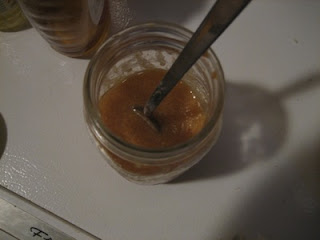It's been a very long time since I've posted here, and for good reason. Food has been a difficult and often boring venture for me the last few months, so I haven't felt motivated. I've decided it's a subject I want to write about anyway, though, because I know I'm not the only one having these experiences and I have benefited from the open sharing of food adventures and non-adventures on other blogs. They've given me advice on what works and doesn't work. I am ever-grateful. So it's my turn to share.
As anyone who's spent time with me knows, I am very careful about my food. I recognized about 12 years ago the strong effect my nutrition has on my body. My body is very sensitive to eating the wrong things (that hasn't always kept me from eating the wrong things, but I digress...). I don't think I quite realized how sensitive I was until recently, though. The short story is that some coaching by a very competent Chinese Medicine doctor and my dad (who shares my genetics, similar complaints, and a drive to fix them naturally), I'm on an elimination diet and down to eating about 12 foods. Literally 12 foods (meat, some fish, cucumber, celery, zucchini, broccoli, spinach, coconut oil, ginger, cilantro, garlic, sea salt). Most people when they go on an elimination diet start out by eliminating gluten, soy, eggs, corn, chocolate, sweets, alcohol, nuts, and dairy. If they're really going crazy they'll eliminate all grains (including rice), potatoes, vinegars, legumes, and even tap water. I've been doing all that for a while now with some, but frustratingly little, progress. Recent trial-and-error and information from the Chinese Medicine doc helped me come to the conclusion I needed to start with a smaller subset of foods in my elimination diet (hence the 12 foods). In an elimination diet, you start with only eating things you're certain you don't react to, and then add in other foods one at a time to see if you have a reaction to them. So far, trying to expanding my food range has outed the following seemingly innocent offenders: salmon, hake (a kind of fish), sesame seeds, sunflower seeds, and mint. WTF guys, WTF. I had to replace my toothpaste with $6 mint-free kind that tastes like fennel (okay I know it could be worse) as well as my Bronner's mint soap.
After a couple of weeks on these restrictions, when I got on the plane for a vacation to San Francisco a couple of weeks ago, though, my skin was completely clear and I hadn't had any panic attacks for two weeks. Compared to several panic attacks a day and breakouts most days for the last 12 years. Pretty significant. On my birthday, though, I decided it was too depressing not to even have a macaroon dipped in chocolate on my birthday. Or a glass of whiskey at Twin Peaks, the first gay bar in SF. Or some sushi. And sake. Or some french fries at Mel's Drive-in. Or some Campari soda. In other words, all hell broke lose and I ate whatever I wanted (except gluten because that would have made me feel crappy enough to ruin my trip) for the rest of my vacation (a memorable find was a gluten-free pop-tart-like pastry at Mariposa Bakery, btw). It only took about 36 hours for the breakouts to come back, and 3 days for the panic attacks at night to return. I sucked it up in favor of the experiences, but it did confirm food choices as a trigger. So I'm back to the 12 Boring Foods.
ANYWAY...it's not going to be like this forever. I have a BIG PLAN. And while this blog's pictures may be of mostly green and brown things for a while, I think it's still worth documenting this journey. I'm going to embark on the GAPS program (a program that many have found success in with healing food sensitivities amongst other symptoms like mine such as skin problems and panic attacks, as well as much more severe problems like schizophrenia and autism) after a few preliminary steps I'll also write about here. And I'm going to survive it. And you know what, as shocking as the idea of eating this way has been, in actuality, it hasn't been that bad. It's even been expanding my taste-buds. Really.

















